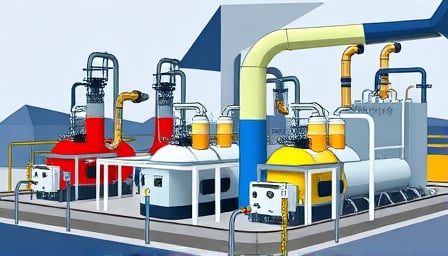Air Liquide’s Meteoric Rise: A Decade of Dominance
Air Liquide SA, the French chemical behemoth, has been on a tear for the past decade, with its stock price skyrocketing to unprecedented heights. The numbers are staggering: an investment of 10,000 euros in the company’s shares 10 years ago would now be worth a whopping 21,417 euros, representing a growth of over 114%. This is not just a minor blip on the radar; it’s a full-blown explosion of shareholder value.
But the company’s success doesn’t stop there. Air Liquide’s market capitalization has ballooned to nearly 100 billion euros, cementing its position as one of the largest and most influential players in the industry. This is a testament to the company’s shrewd business acumen and its ability to navigate the complex landscape of global markets.
And now, Air Liquide is poised to make a major move, reportedly in exclusive talks to acquire South Korea’s DIG Airgas for a staggering $3.3 billion. This potential acquisition could be the key to unlocking even greater growth and expansion plans for the company. With its vast resources and expertise, Air Liquide is well-positioned to take on the challenges of the global market and emerge victorious.
The Acquisition: A Game-Changer?
So, what does this potential acquisition mean for Air Liquide and its stakeholders? Here are a few possible scenarios:
- Increased market share: With the acquisition of DIG Airgas, Air Liquide could significantly expand its presence in the South Korean market, giving it a major foothold in one of the world’s most dynamic economies.
- Enhanced capabilities: The acquisition could also bring new technologies and expertise to Air Liquide, enabling it to stay ahead of the curve in terms of innovation and competitiveness.
- New revenue streams: The acquisition could open up new revenue streams for Air Liquide, as it gains access to new markets and customers.
However, there are also potential risks and challenges associated with the acquisition, including:
- Integration challenges: Integrating DIG Airgas into Air Liquide’s existing operations could be a complex and time-consuming process, requiring significant resources and expertise.
- Regulatory hurdles: The acquisition may also face regulatory hurdles, particularly in South Korea, where the government may be wary of foreign ownership.
- Financial risks: The acquisition could also pose significant financial risks, particularly if Air Liquide overpays for the target company or fails to integrate it successfully.
Conclusion
Air Liquide’s meteoric rise over the past decade is a testament to the company’s shrewd business acumen and its ability to navigate the complex landscape of global markets. The potential acquisition of DIG Airgas could be the key to unlocking even greater growth and expansion plans for the company, but it also poses significant risks and challenges. As the deal unfolds, investors and stakeholders will be watching with bated breath to see how Air Liquide navigates this critical juncture in its history.
